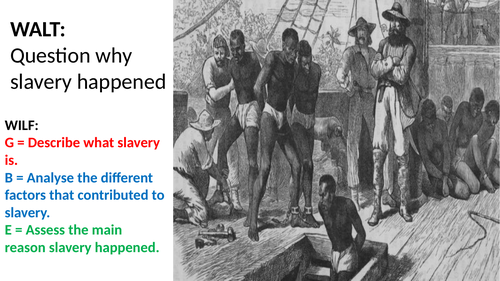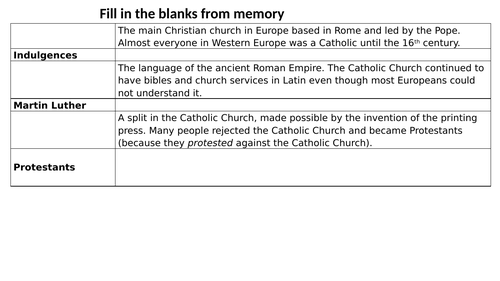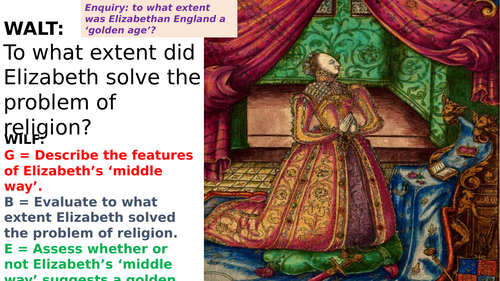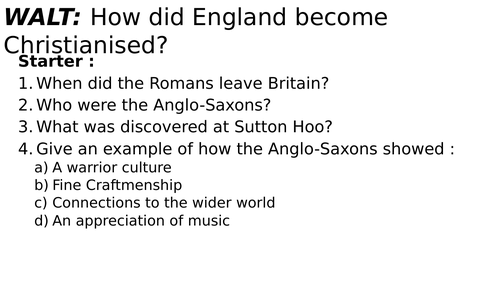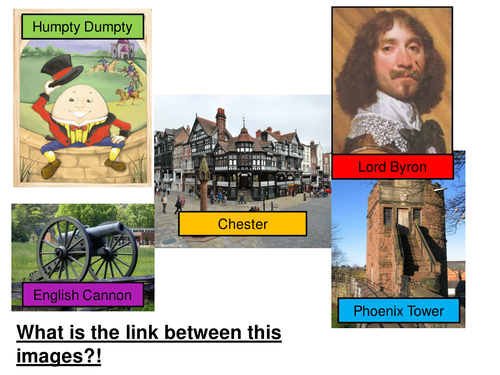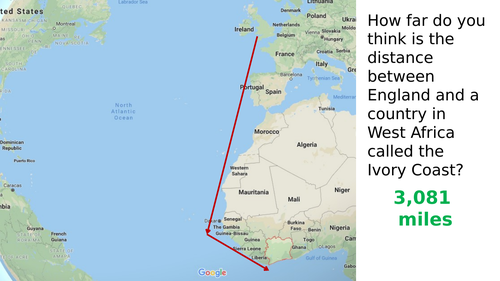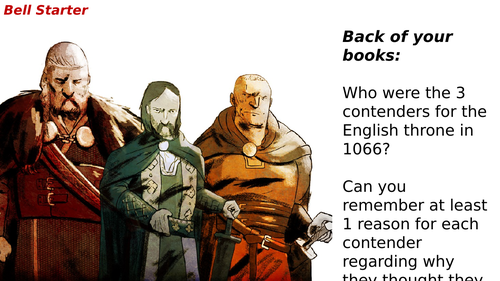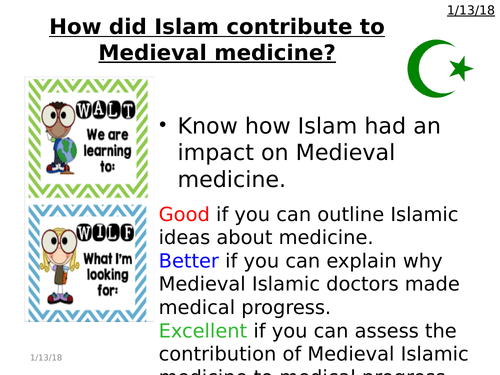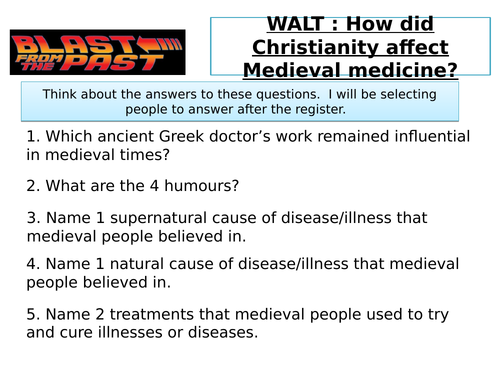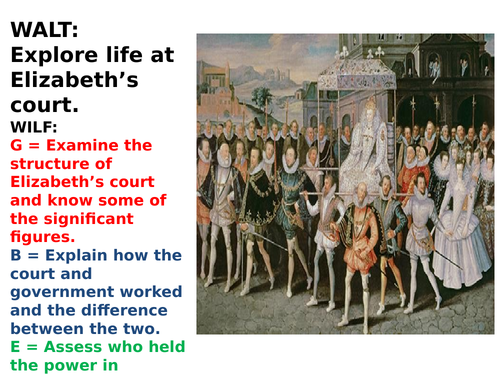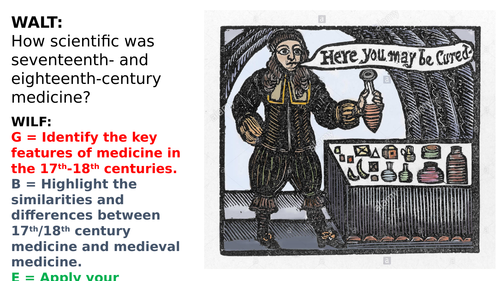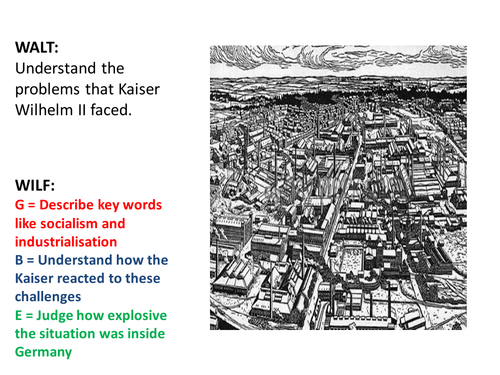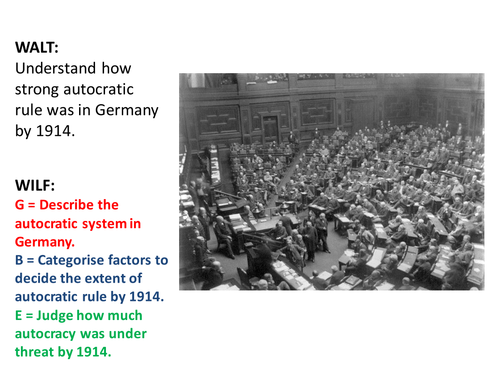
58Uploads
21k+Views
5k+Downloads
History

Terms of the Treaty of Versailles. Peacemaking and the League of Nations
A self-contained lesson on the terms of the Treaty of Versailles.

Culture and Theatre in Elizabethan England
This is part of a series of lessons, aimed at Y8, based around the inquiry: to what extent was Elizabethan England a Golden Age? Each lesson comes back to and refers to the arguments of two history teachers: Mr Oldham and Mr Williams.
The series of lessons is as follows:
Inquiry introduction.
Elizabethan Religious Settlement.
Elizabeth and the issue of marriage.
Sailors and exploration during Elizabeth’s reign.
Wealth and poverty in Elizabethan England.
Culture and theatre in Elizabethan England.
Mary Queen of Scots.
Causes of the Anglo-Spanish conflict.
The Spanish Armada.

Elizabethan Religious Settlement (Middle Way)
This is the introduction to a series of lessons, aimed at Y8, based around the inquiry: to what extent was Elizabethan England a Golden Age? Each lesson comes back to and refers to the arguments of two history teachers: Mr Oldham and Mr Williams.
The series of lessons is as follows:
Inquiry introduction.
Elizabethan Religious Settlement.
Elizabeth and the issue of marriage.
Sailors and exploration during Elizabeth’s reign.
Wealth and poverty in Elizabethan England.
Culture and theatre in Elizabethan England.
Mary Queen of Scots.
Causes of the Anglo-Spanish conflict.
The Spanish Armada.

Spread of Christianity in England (St. Hadrian and St. Theodore)
This lessons is part of the enquiry: ‘Who were the English (before 1066)’?
The enquiry focuses on the skill historical evidence. Overall, students will refer to five pieces of evidence (Roman skeletons discovered at Aballava fort, Sutton Hoo helmet, Bede’s account of Hadrian and Theodore, the Viking Domesday Stone, and a coin from the reign of King Æthelstan) in order to answer the enquiry question.
This lesson involves narrative accounts of the impact of three saints - Augustine, Hadrian and Theodore - on the spread of Christianity in England. It involves plotting their travels on a map and then completing questions. The lesson contains all necessary resources including starters and plenaries. The resources on the PowerPoint are hopefully self-explanatory in terms of how to deliver it to students.
You can download the corresponding student booklet for free with all the required work sheets and resources.
The lesson sequence for this enquiry is as follows:
Roman Skeleton Mystery (2 lessons).
Anglo-Saxon Kingdoms and Sutton Hoo (2 lessons).
The Spread of Christianity in England.
Viking Raid on Lindisfarne.
Æthelstan, King of the English
Review lesson: Who were the English (before 1066)?

Viking Raid on Lindisfarne
This lessons is part of the enquiry: ‘Who were the English (before 1066)’?
The enquiry focuses on the skill historical evidence. Overall, students will refer to five pieces of evidence (Roman skeletons discovered at Aballava fort, Sutton Hoo helmet, Bede’s account of Hadrian and Theodore, the Viking Domesday Stone, and a coin from the reign of King Æthelstan) in order to answer the enquiry question.
This lesson’s main task is a quick-off-the-draw group task. Students need the questions printing out on coloured paper (different colours for each group). They use the information sheet (available in the student booklet) to find the answers to each question one at a time. They must bring their answers to you (usually on a whiteboard) and it must be correct before you give them the next question. The lesson also features several video clips and links and an analysis of the Viking Domesday Stone (linked to the enquiry question). Otherwise, the resources on the PowerPoint are hopefully self-explanatory in terms of how to deliver it to students.
You can download the corresponding student booklet for free with all the required work sheets and resources.
The lesson sequence for this enquiry is as follows:
Roman Skeleton Mystery (2 lessons).
Anglo-Saxon Kingdoms and Sutton Hoo (2 lessons).
The Spread of Christianity in England.
Viking Raid on Lindisfarne.
Æthelstan, King of the English
Review lesson: Who were the English (before 1066)?

Elizabeth and the issue of marriage.
This is the introduction to a series of lessons, aimed at Y8, based around the inquiry: to what extent was Elizabethan England a Golden Age? Each lesson comes back to and refers to the arguments of two history teachers: Mr Oldham and Mr Williams.
The series of lessons is as follows:
Inquiry introduction.
Elizabethan Religious Settlement.
Elizabeth and the issue of marriage.
Sailors and exploration during Elizabeth’s reign.
Wealth and poverty in Elizabethan England.
Culture and theatre in Elizabethan England.
Mary Queen of Scots.
Causes of the Anglo-Spanish conflict.
The Spanish Armada.

English Civil War Siege of Chester
A self-contained lesson about the Siege of Chester during the English Civil War. Includes fun activities like Map from Memory, an Information Hunt etc.

Who were the Plantagenets? An Introduction
Designed as a Y7 introduction to the Plantagenets, using Matthew Paris’ illustration as a starting point.

Islamic Medicine - Health and the People - GCSE History
Islamic medicine - designed to fit AQA GCSE History.

Christianity's contribution to medicine AQA GCSE History
Medieval History - the Christian Church's contribution to medicine.

AQA GCSE Kaiser Wilhelm II's Character & Role in Government
Designed for the new AQA History GCSE.
Features complete lesson.

Elizabethan England's links with the Islamic World
Tudor and Elizabethan England’s links with the Islamic World (Morocco, the Barbary Coast, and the Ottoman and Persian Empires) are explored in this lesson as part of a unit enquiry: ‘how did England become more connected with the wider world between 1492 -1642?’
Includes all traditional phases of a lesson. A guided reading resource with several linked tasks, a detailed map, challenge task, as well as an analysis of an extract from Jerry Brotton’s fantastic *This Orient Isle: Elizabethan England and the Islamic World * (2016).
Intended to be taught to KS3.

Kaiser Wilhelm's problems. Industrialisation, socialism and democracy in Germany. AQA GCSE History
Designed to fit in with the new AQA GCSE topic 'Germany, 1890-1945'.

Kaiser Wilhelm II's Germany. How strong was autocratic rule? New GCSE AQA
Designed as a review of the new AQA GCSE topic 'Germany 1890 -1945' from 1890-1914.

The Lost Colony at Roanoke (Tudor Exploration and Colonisation)
The mystery of the Lost Colony at Roanoke is explored in this lesson as part of a unit enquiry: ‘how did England become more connected with the wider world between 1492 -1642?’
Includes a video (from Smithsonian channel) introducing the mystery, followed by a task using five pieces of evidence for students to analyse to see what prevailing theories about the fate of the Roanoke Colony are most supported by the evidence. This is followed by an analysis of two interpretations from historians about the fate of the colony. Finally, a ‘counter the codswallop’ plenary.
Intended to be taught to KS3.


